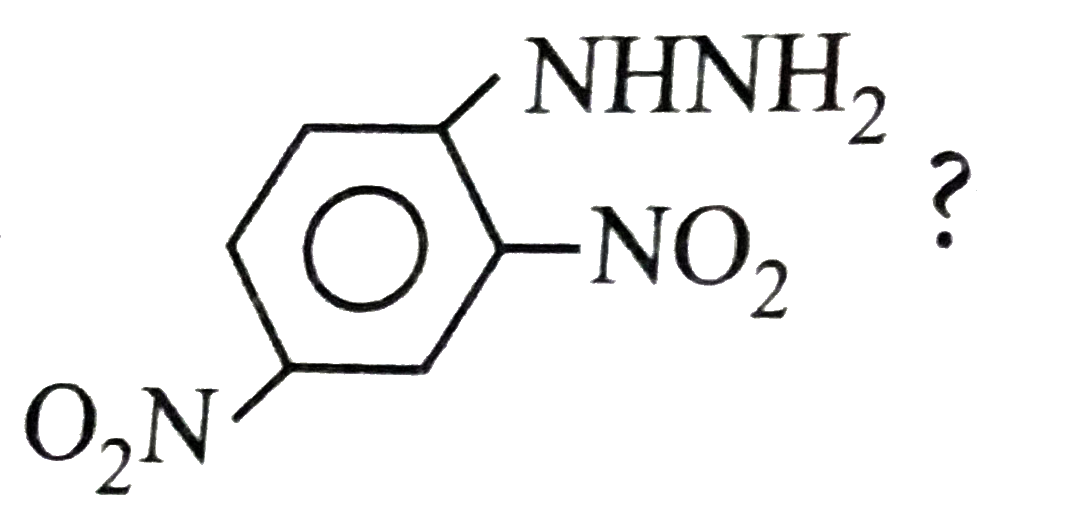Which of the following reactions will not give a four-membered cyclic compound ?



d. 
The correct Answer is:B, C
To determine which of the given reactions will not yield a four-membered cyclic compound, we will analyze each reaction step by step.
Step 1: Analyze Reaction A
- Starting Material: A compound containing an acetic hydrogen.
- Reagent: Sodium ethoxide (NaOEt).
- Mechanism: NaOEt abstracts the acetic hydrogen, forming a carbanion. This carbanion attacks another carbon atom, leading to the formation of a cyclic compound.
- Conclusion: This reaction will yield a four-membered cyclic compound.
Step 2: Analyze Reaction B
- Starting Material: Another compound with acetic hydrogen.
- Reagent: Sodium ethoxide (NaOEt).
- Mechanism: Similar to Reaction A, NaOEt abstracts the acetic hydrogen, forming a carbanion. This carbanion attacks a carbon containing bromine, leading to the formation of a cyclic compound.
- Conclusion: This reaction will also yield a four-membered cyclic compound.
Step 3: Analyze Reaction C
- Starting Material: A compound that can undergo a cyclization reaction.
- Mechanism: The reaction involves the formation of a cyclic compound through the attack of one carbon on another, leading to the formation of a cyclopropane.
- Conclusion: This reaction will yield a four-membered cyclic compound (cyclopropane).
Step 4: Analyze Reaction D
- Starting Material: A compound that can form free radicals.
- Mechanism: The free radicals combine to form a bond, resulting in the formation of a ring structure.
- Conclusion: This reaction will also yield a four-membered cyclic compound (cyclobutane).
Final Conclusion
After analyzing all the reactions, we find that:
- Reactions A, B, and D yield four-membered cyclic compounds.
- Reaction C is the only one that does not yield a four-membered cyclic compound.
Answer
The reaction that will not give a four-membered cyclic compound is C.
- Starting Material: A compound containing an acetic hydrogen.
- Reagent: Sodium ethoxide (NaOEt).
- Mechanism: NaOEt abstracts the acetic hydrogen, forming a carbanion. This carbanion attacks another carbon atom, leading to the formation of a cyclic compound.
- Conclusion: This reaction will yield a four-membered cyclic compound.
- Starting Material: Another compound with acetic hydrogen.
- Reagent: Sodium ethoxide (NaOEt).
- Mechanism: Similar to Reaction A, NaOEt abstracts the acetic hydrogen, forming a carbanion. This carbanion attacks a carbon containing bromine, leading to the formation of a cyclic compound.
- Conclusion: This reaction will also yield a four-membered cyclic compound.
- Starting Material: A compound that can undergo a cyclization reaction.
- Mechanism: The reaction involves the formation of a cyclic compound through the attack of one carbon on another, leading to the formation of a cyclopropane.
- Conclusion: This reaction will yield a four-membered cyclic compound (cyclopropane).
- Starting Material: A compound that can form free radicals.
- Mechanism: The free radicals combine to form a bond, resulting in the formation of a ring structure.
- Conclusion: This reaction will also yield a four-membered cyclic compound (cyclobutane).
After analyzing all the reactions, we find that:
- Reactions A, B, and D yield four-membered cyclic compounds.
- Reaction C is the only one that does not yield a four-membered cyclic compound.
The reaction that will not give a four-membered cyclic compound is C.
Topper's Solved these Questions
- ALKANES AND CYCLOALKANESBOOK - CENGAGE CHEMISTRY ENGLISHCHAPTER - ALKANES AND CYCLOALKANESEXERCISE - Single Correct
45 Videos
- ALKANES AND CYCLOALKANESBOOK - CENGAGE CHEMISTRY ENGLISHCHAPTER - ALKANES AND CYCLOALKANESEXERCISE - Archives
13 Videos
- ALKANES AND CYCLOALKANESBOOK - CENGAGE CHEMISTRY ENGLISHCHAPTER - ALKANES AND CYCLOALKANESEXERCISE - Reasoning and Assertion
2 Videos
- ALKENES AND ALKADIENESBOOK - CENGAGE CHEMISTRY ENGLISHCHAPTER - ALKENES AND ALKADIENESEXERCISE - Single correct Answer
14 Videos
Similar Questions
Knowledge Check
Which of the following reactions will give alkyne?
A B
B CH3C−Br∣C∣Br−Br∣C∣Br−CH3Zn,Δ−−−→DH3C−C≡CHHg+2,H2SO4−−−−−−−−→
CH3C−Br∣C∣Br−Br∣C∣Br−CH3Zn,Δ−−−→DH3C−C≡CHHg+2,H2SO4−−−−−−−−→Which of the following compounds will give HVZ reaction?
A B
B C
C D
D
Which of the following compounds will give E1 reaction?
A BPh−Br∣CH−CH3CH2C=CH−Cl∣CH−CH3D
BPh−Br∣CH−CH3CH2C=CH−Cl∣CH−CH3D
Which of the following reactions will not give propane ?
View SolutionWhich of the following reaction will not give methane?
View SolutionWhich of the following compounds will not give haloform reaction?
View SolutionWhich of the following reaction gives by isocyanide
View SolutionWhich of the following compounds will give a coloured crystalline compound with
 ?
?
View Solution
